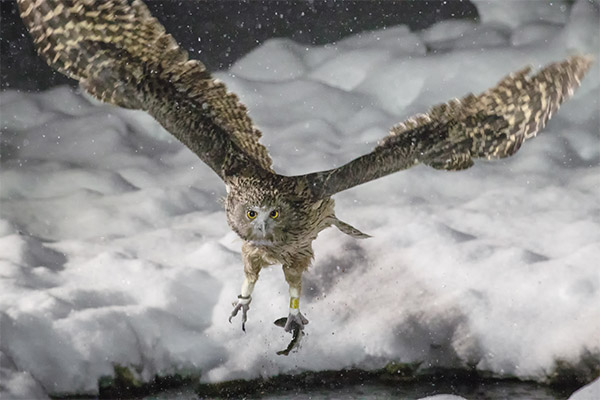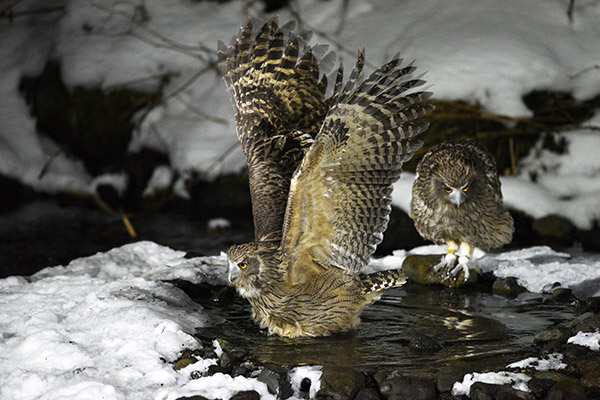Owls are well-known as being highly successful predators, which excel at
capturing their prey using their remarkable hearing and sense of sight,
particularly at night. Some owls - a small number of them - have
taken to getting their feet wet habitually, and one particular species
in East Asia has taken the habit to the extreme: the Blakiston's Fish-Owl.

Blakiston’s Fish Owl
(Photo: Julie Edgley)
Considered by some to be the largest owl in the world, the Blakiston's
Fish-Owl is found in far eastern Russia, northeast China and northern
Japan. its preferred habitat is older, lowland forests bearing large
living and dead trees with cavities large enough to accommodate its
nests. This is a region of freezing and snowy winters and even when many
water surfaces in its preferred riparian habitats should freeze over,
this owl remains there in the cold, concentrating its hunting efforts
along quick-flowing streams and other water bodies that remain ice-free.
it may capture prey by stalking it from a low perch or by wading in
shallow water. As its name rightfully suggests, fish are an important
item but it will also feed on waterfowl, small mammals, amphibians and
crayfish, among other items, with the composition of its diet varying
according to seasonal availability.


Blakison's Fish Owl
(Photo: Takashi Muramatsu)
(Photo: Takashi Muramatsu)
Unfortunately, this species is
endangered owing to logging in its preferred habitats and other resource
extraction. Its population status, in addition to the remoteness of
much of its range and peculiar habitat have conferred something of a
legendary status to Blakiston's Fish-Owl. We will watch for it during
our Japan in Winter tour in February 2022, when resident individuals may come to feed at a stream-side we will visit on Hokkaido!


